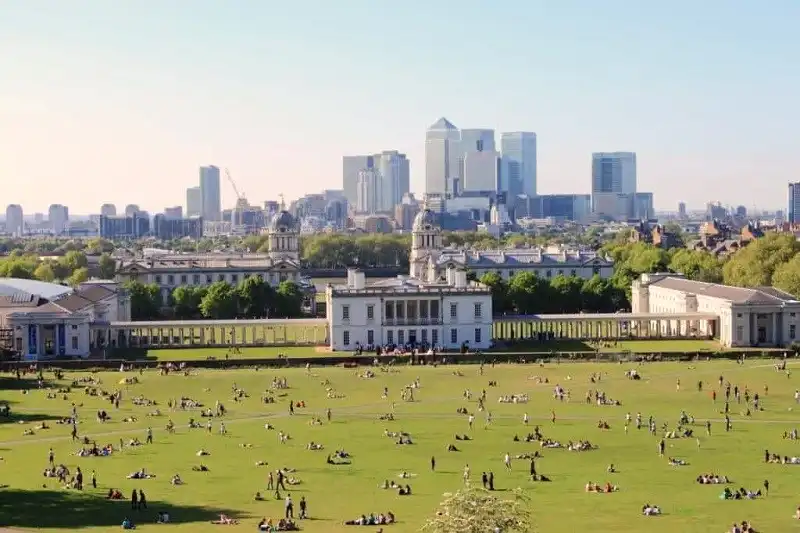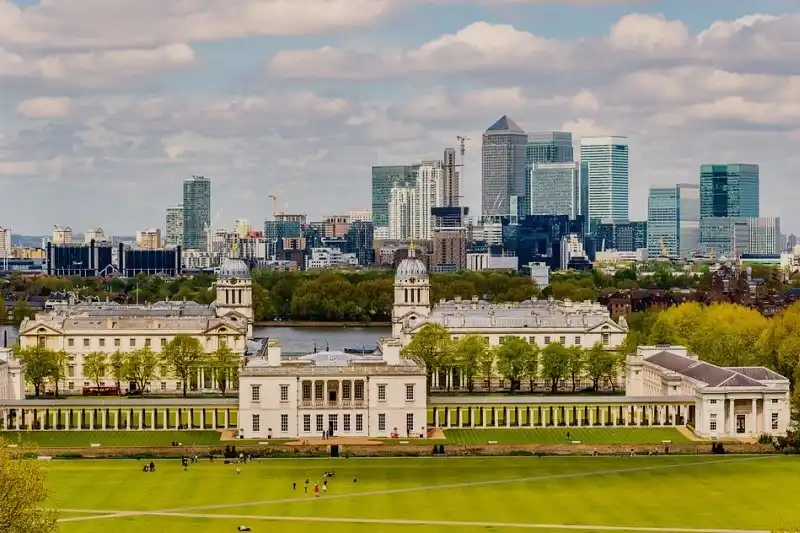Choosing where to buy a property in London often hinges on a fundamental question:
north or south of the River Thames? This decision is more than just a geographical preference—it shapes your lifestyle, commute, and budget. North and South London each offer distinct advantages, from lush green spaces and transport connectivity to cultural attractions and property price trends. For buyers—whether first-time homeowners or seasoned investors—understanding these differences is essential to making an informed choice. This article analyzes the key factors—green spaces, transport, attractions, and property prices—to help you decide which part of London best suits your needs. As a supplier of pipes and equipment, we also highlight how quality construction materials contribute to the value and durability of properties in these regions.
Green Spaces
London’s reputation as one of the world’s greenest cities is well-earned, with both North and South London offering an abundance of parks and open spaces. South London is particularly known for its commons, such as Clapham Common, Wandsworth Common, Tooting Common, and Wimbledon Common, which collectively span approximately 1,500 hectares of public green space. Notable parks like Brockwell Park, which hosts the annual Lambeth Country Show, as well as Richmond Park and Greenwich Park, further enhance South London’s appeal for those seeking outdoor recreation. These green spaces provide a serene escape from urban life, making them a significant draw for families and nature enthusiasts.
North London, meanwhile, is home to a higher concentration of royal parks, including Hyde Park, Kensington Gardens, The Green Park, Regent’s Park, Primrose Hill, and St James’s Park. Other popular green areas include Hampstead Heath, Highgate Wood, and Gunnersbury Park, offering a mix of expansive landscapes and historic charm. The proximity to these green spaces often drives up property prices, as homes near parks or commons are highly sought after. For buyers, the choice may come down to whether you prefer the sprawling commons of South London or the iconic royal parks of the North. Both regions offer ample opportunities for outdoor activities, but the specific vibe and accessibility of these spaces vary.

Transport
Transport connectivity is a critical consideration for anyone buying property in London, particularly for those commuting to the city centre or navigating the capital for work or leisure. North London has a significant advantage in this regard, with over 250 London Underground stations providing extensive coverage across boroughs like Camden, Islington, and Barnet. This dense network makes commuting to central London relatively quick and convenient, with lines like the Northern, Piccadilly, and Victoria offering frequent services. For those prioritizing ease of access to the city’s core, North London’s transport infrastructure is hard to beat.
South London, by contrast, has only 29 Underground stations—even with recent extensions like the Northern line to Battersea. Residents often rely on the London Overground, mainline trains, or buses to complete their journeys, particularly after hours when train services may be less frequent. Mainline trains connect South London to major stations like Waterloo, Victoria, and London Bridge, serving areas such as Richmond, Clapham, and Croydon. However, these services can be more susceptible to delays and disruptions compared to the Underground. While South London’s transport options are improving, particularly with Overground expansions, it still lags behind North London in terms of direct and reliable connectivity. Buyers who value a seamless commute may lean toward North London, while those comfortable with mainline or bus travel might find South London’s options sufficient.
Attractions
The cultural and historical offerings of North and South London add another layer to the decision-making process. North London, as the older part of the city, is home to many of London’s most iconic landmarks. Buckingham Palace, the Tower of London, and the Houses of Parliament are all located north of the Thames, alongside world-class institutions like the British Museum and the Natural History Museum. Neighbourhoods like Camden and Shoreditch also offer vibrant cultural scenes, with markets, music venues, and art galleries that attract a diverse crowd.
South London, while newer, boasts its own set of attractions that appeal to those drawn to modern landmarks and emerging cultural hubs. The London Eye, the Shard, and the Imperial War Museum are key draws, offering stunning views and historical insights. Areas like Greenwich, with its maritime heritage and the Cutty Sark, add a unique charm. South London’s attractions tend to reflect its more recent development, with a focus on contemporary architecture and community-driven spaces. For buyers, the choice may depend on whether you’re drawn to the historic prestige of North London or the modern, evolving character of South London.

Property Prices
Property prices are often the deciding factor for buyers, and there are notable differences between North and South London. Based on recent data, the average property price in North London is approximately £722,000, reflecting a 3% decline year-over-year from April 2024 to March 2025. In South London, the average price is around £599,190, with a 2% decline over a similar period. These figures, while drawn from slightly different timeframes and sources, suggest that North London remains more expensive overall, aligning with its reputation for hosting prime central areas like Knightsbridge and Mayfair.
However, price variations within each region are significant. In North London, central boroughs such as Islington and Camden command premium prices, often exceeding £1 million for desirable properties. Outer areas like Enfield, Harrow, Colindale, and Wembley offer more affordable options, with average prices as low as £345,000 in some postcode sectors. South London also has its high-end enclaves, such as Wimbledon and Clapham, where properties can rival North London’s prices, but boroughs like Bexley, Newham, Havering, and Lewisham provide better value, with averages closer to £400,000–£500,000.
Recent market trends indicate a cooling in both regions, driven by increased housing supply and affordability pressures. For instance, London and southern regions have seen a 16–19% increase in homes for sale, contributing to slower price growth of less than 0.5% annually. South London’s affordability, combined with its growing popularity and ongoing development, makes it an attractive option for budget-conscious buyers. North London, while pricier, appeals to those seeking proximity to central London and higher-quality housing with larger rooms.
The table below summarizes key property price data for North and South London:
- Region Average Property Price Year-over-Year Change Affordable Areas
- Expensive Areas North London £722,000 -3% (Apr 2024–Mar 2025) Enfield, Harrow, Colindale, Wembley Islington, Hampstead, Camden
- South London £599,190 -2% (last year) Bexley, Newham, Havering, Lewisham Wimbledon, Clapham, Richmond
| Region | Average Property Price | Year-over-Year Change | Affordable Areas | Expensive Areas |
| North London | £722,000 | -3% (Apr 2024–Mar 2025) | Enfield, Harrow, Colindale, Wembley | Islington, Hampstead, Camden |
| South London | £599,190 | -2% (last year) | Bexley, Newham, Havering, Lewisham | Wimbledon, Clapham, Richmond |
Pros and Cons of North London
North London offers several advantages that make it a compelling choice for buyers. Its extensive Underground network provides quick and convenient access to central London—ideal for professionals working in the city. Neighbourhoods like Islington, Hampstead, and Camden are highly desirable, often featuring larger homes with spacious rooms, making them attractive to families and those seeking premium properties. However, these benefits come at a cost—North London’s average property prices are significantly higher, and the overall cost of living, including council tax and amenities, tends to be steeper. More affordable areas like Enfield, Harrow, Colindale, and Wembley offer options for those with tighter budgets, though they may lack the prestige and amenities of the central boroughs.
Pros and Cons of South London
South London stands out for its affordability, with average property prices notably lower than in the North. The region is gaining popularity, supported by ongoing development and regeneration projects in areas such as Croydon and Lewisham. Its green spaces—including eight of London’s greenest boroughs—make it particularly attractive to those who value outdoor living. However, South London’s transport network is less robust, with fewer Underground stations and a greater reliance on mainline trains and buses, which can be less reliable. While areas like Bexley, Newham, Havering, and Lewisham offer excellent value, high-end neighbourhoods like Wimbledon and Clapham can be just as expensive as parts of North London.

The Role of Construction Materials
For buyers investing in new developments, the quality of construction materials is a critical factor. High-grade pipes, fittings, and equipment ensure that properties are durable, energy-efficient, and low-maintenance—enhancing their long-term value. As a supplier of such materials, we recognize their importance in supporting London’s property market, especially in rapidly developing parts of South London and well-established areas in the North. Developers in both regions rely on reliable materials to meet modern building standards, which directly affects the appeal and longevity of new homes.
Conclusion
Choosing between North and South London ultimately depends on your priorities and circumstances. South London offers more affordable properties, generous green spaces, and a growing sense of community, making it an appealing option for budget-conscious buyers or those seeking value for money. North London—with its superior transport links, historic landmarks, and prestigious neighbourhoods—is better suited to those who prioritise connectivity and heritage, though at a higher cost. Lifestyle considerations, such as proximity to cultural sites or parks, along with practical factors like commute times and housing type, should guide your decision.
Recent market trends show that both regions are experiencing a cooling in property prices, with South London offering slightly better value and North London maintaining its premium appeal. Within each region, boroughs vary widely in character and pricing, making local research essential. Whether you’re drawn to the vibrant energy of North London or the evolving charm of the South, thorough research and professional advice will help you find the perfect home.
The best developments in North London that you can see on the Riverview site:
The best developments in South London that you can see on the Riverview site:
Contact us: +44 77 12 252392